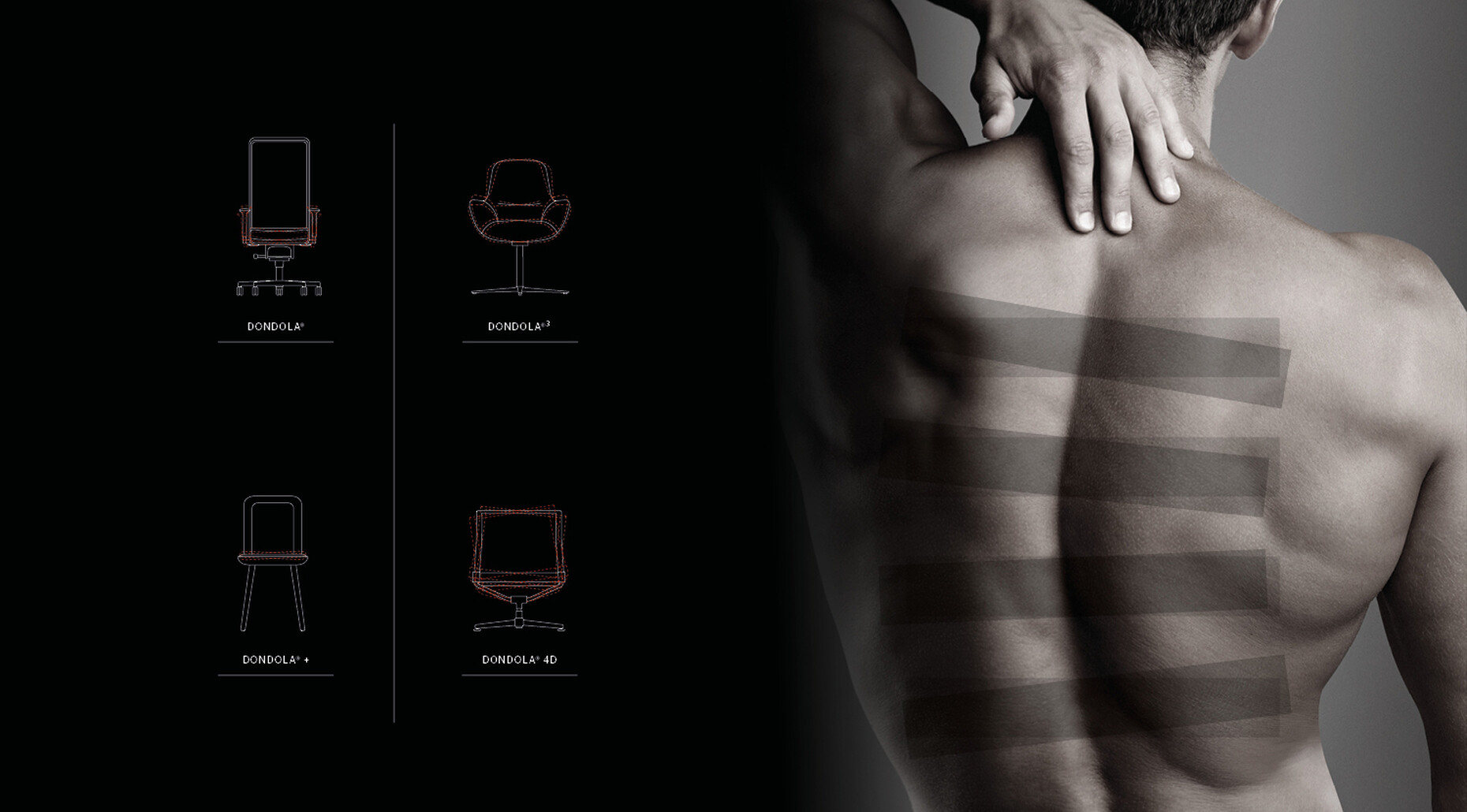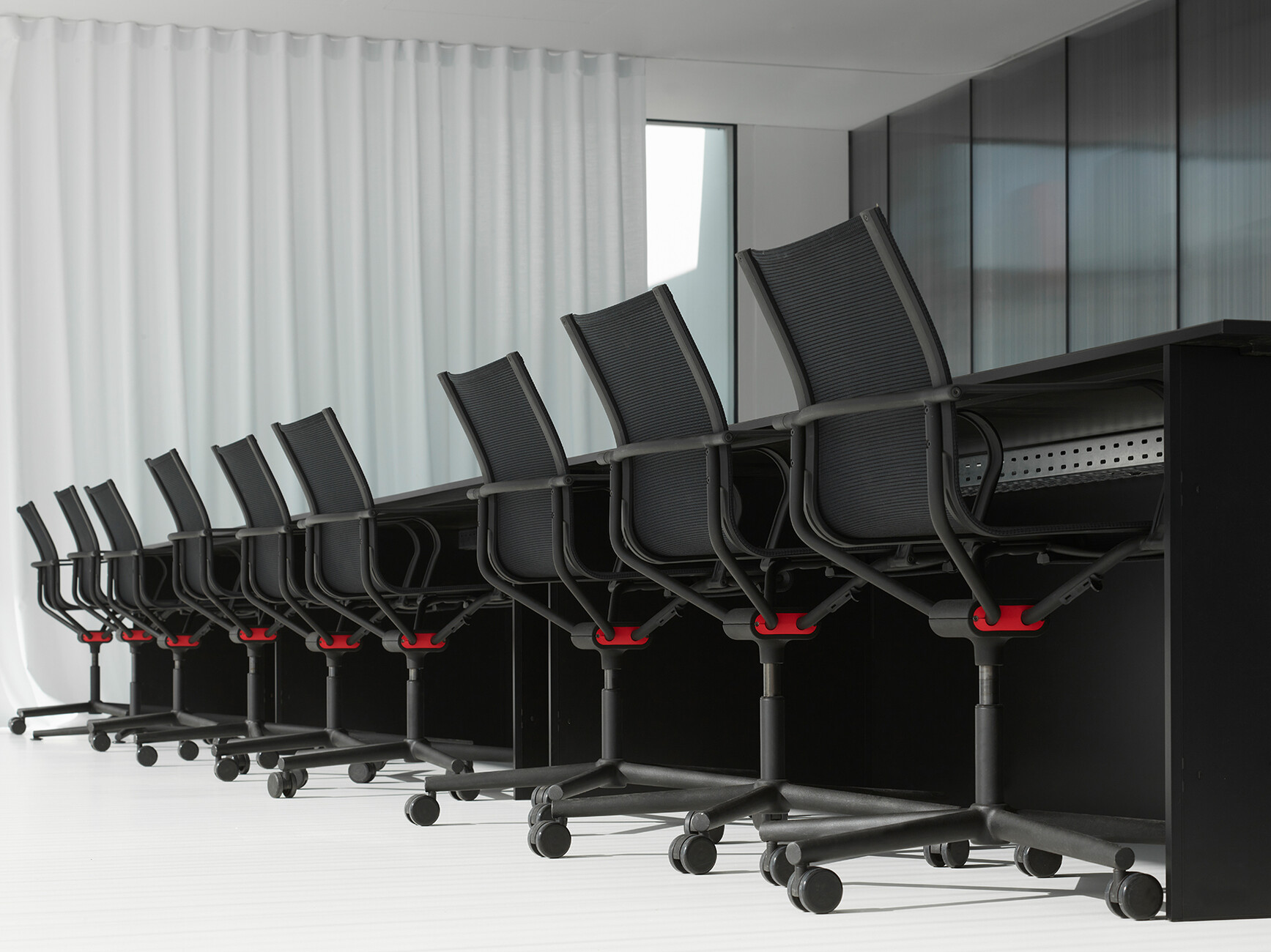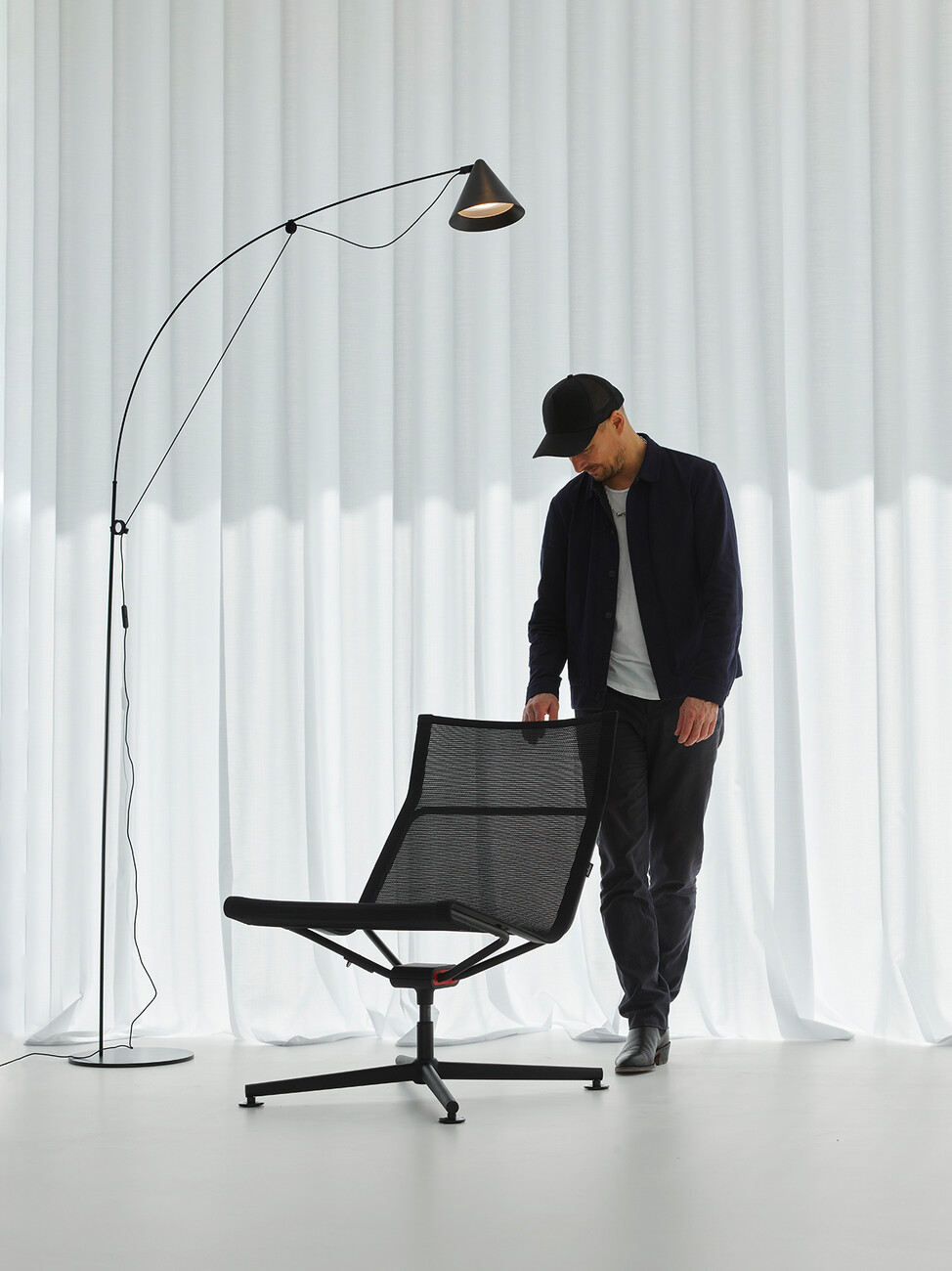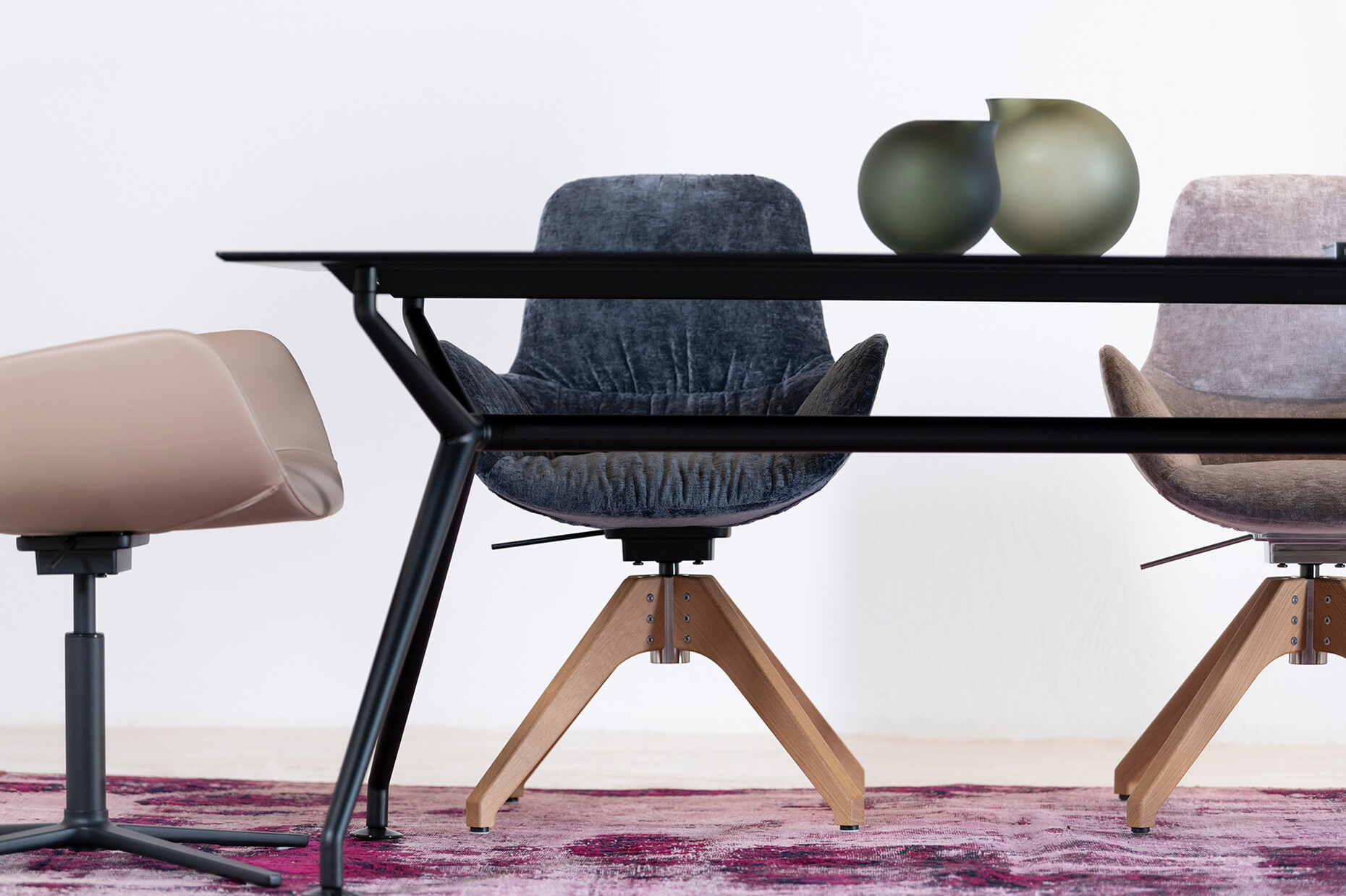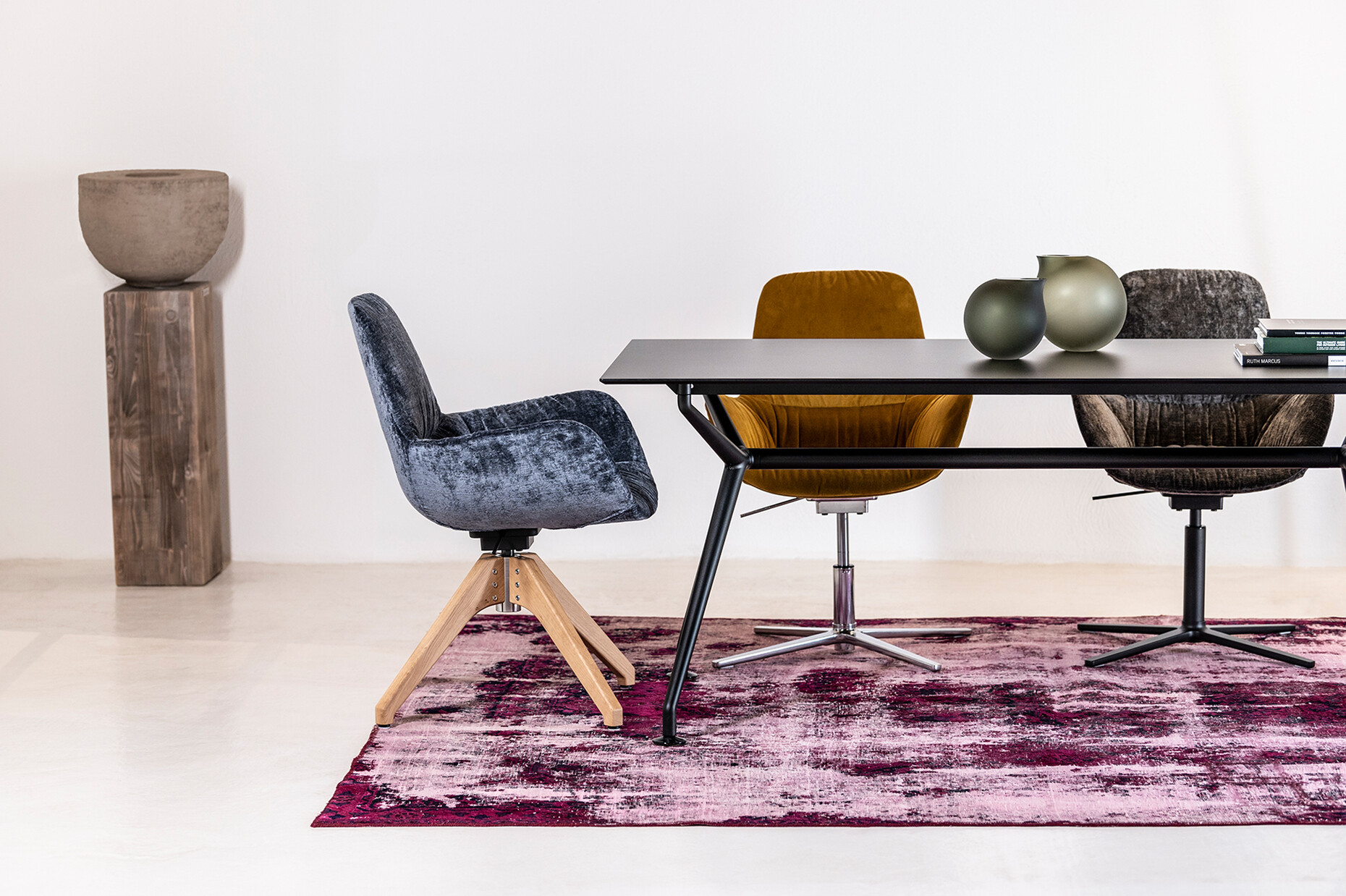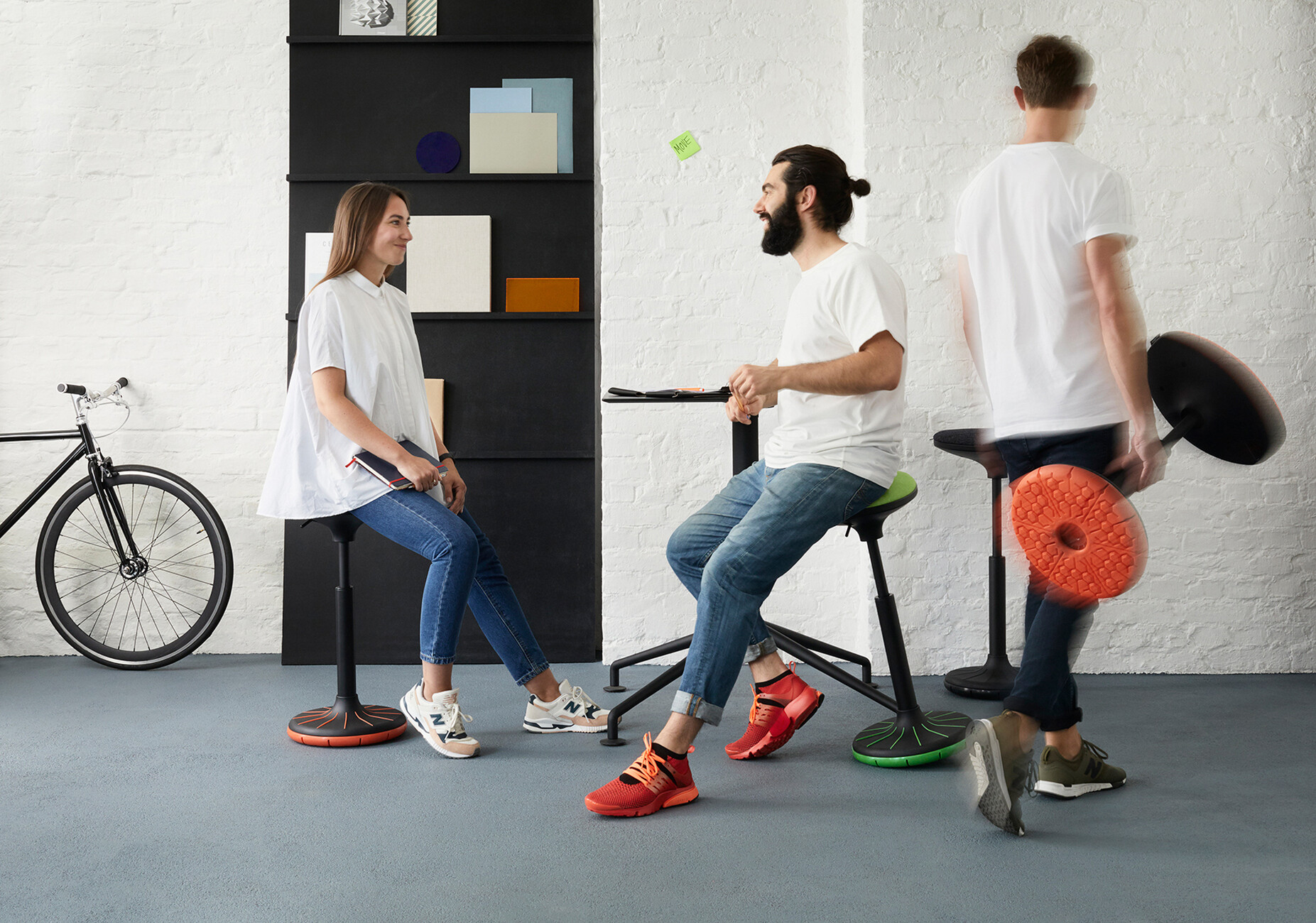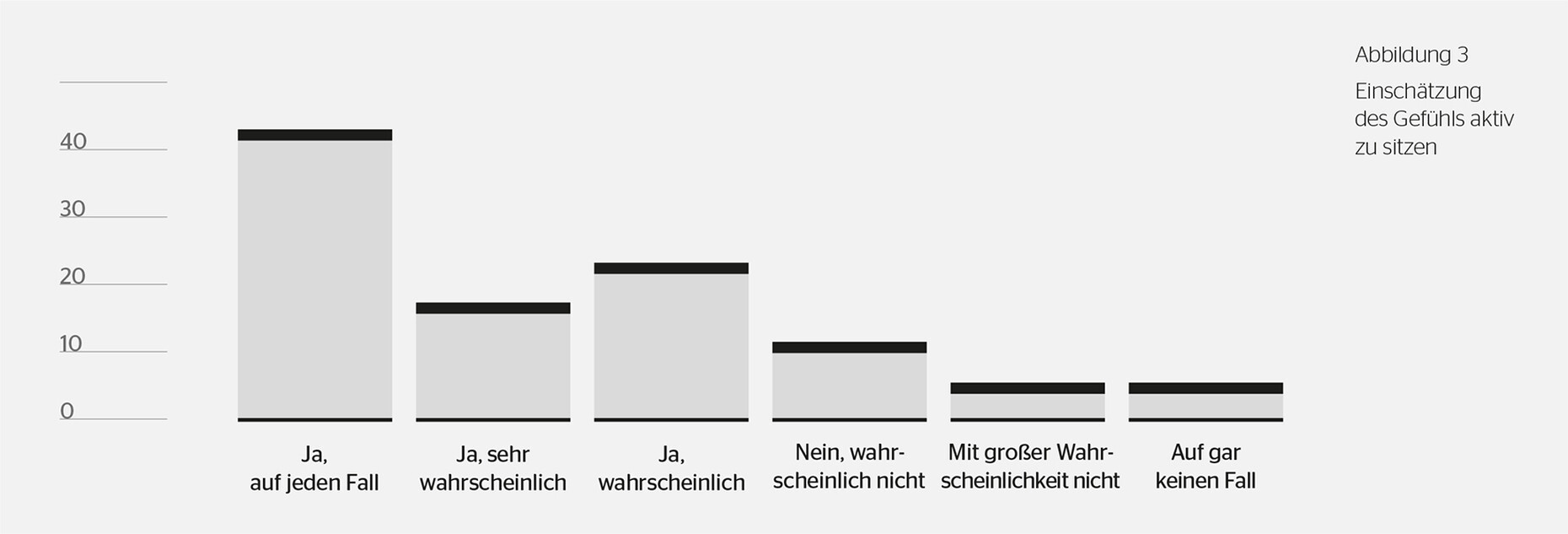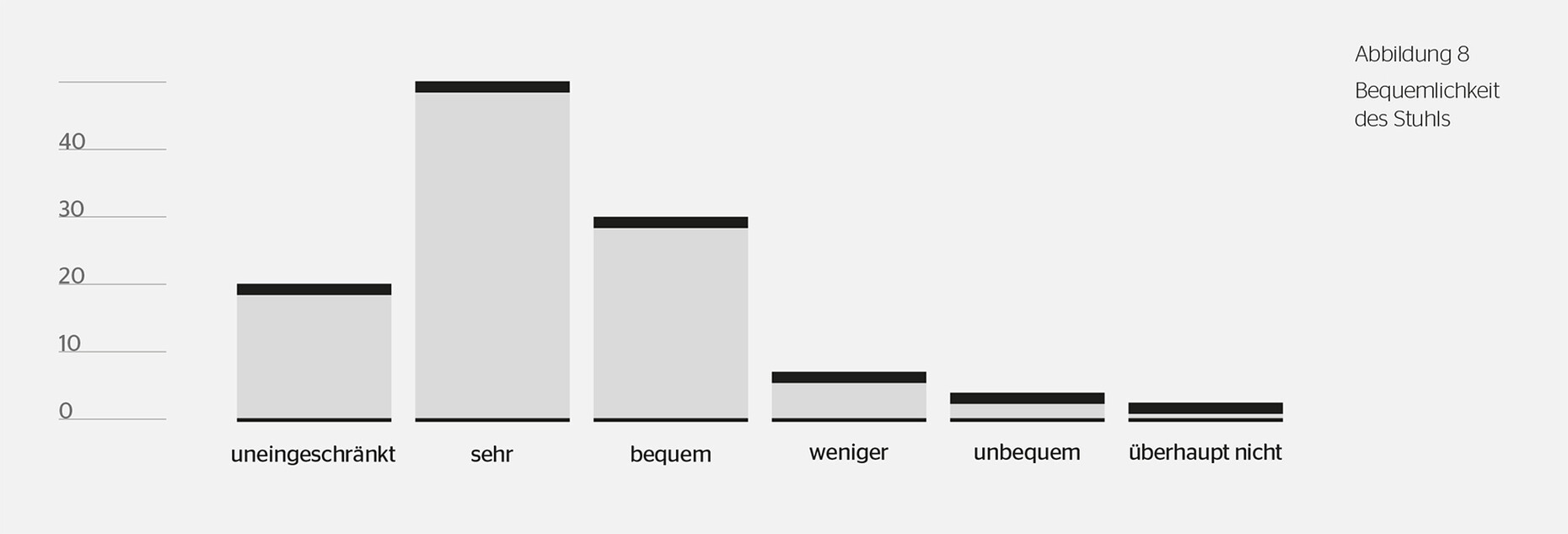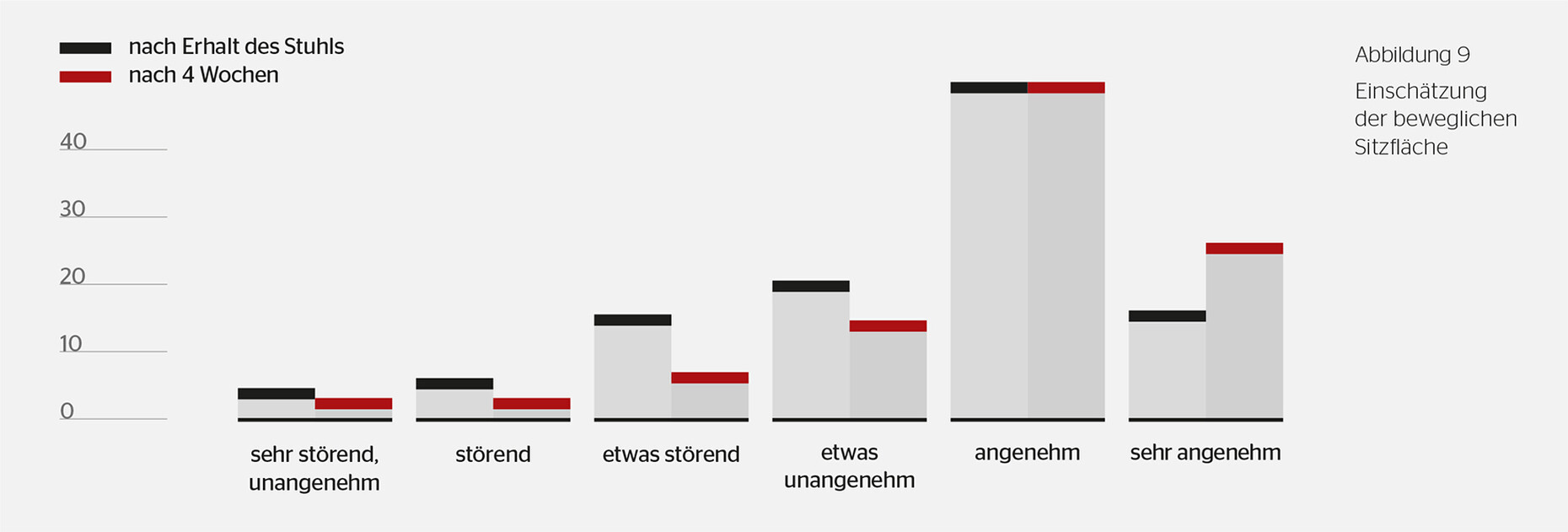Keeping the Back Moving
“Sit up straight”. Our parents’ words of warning still ring in our ears when our backs ache after long hours at our computer screens. Head up, back straight, look slightly downwards, get up as frequently as possible – in our hectic everyday working lives it is often hard to implement all these well-meant words of wisdom. With this in mind, Wagner’s chair actively counters back pain as such. Thanks to its Dondola hinge users can sit dynamically without effort because the chair’s mechanism adapts to its users’ weight. The seat surface’s almost imperceptible three-dimensional movements ensure that users do not remain in the same position for hours on end. Developed in close collaboration with physiotherapists and specialists in occupational medicine, this dynamic way of sitting improves users’ blood circulation and takes the strain of their spinal discs.
The benefit of this is that, independently of which chair people opt for from the Wagner range – be it the “W3” chair stool, the “W-Club”, the “W2020” or any one of the entire “D1” family of chairs by Stefan Diez – all the current models benefit from the unique movement afforded by the Dondola seat hinge, thus making an appreciable contribution to healthy backs. The way that the Dondola system works has been patented, which means that it can only be used for the chairs produced by this family company from Langenneufnach. Wagner thus accords its office chairs and their construction an important role in the prevention of back pain. Going into the details, the Dondola hinge consists of two steel plates held together at a central point by means of a vulcanized bearing shell. This technology originally comes from the automotive sector and is correspondingly durable. This flexible point on the chair loosens the rigid connection between its upper and lower sections, allowing the chair seat to benefit from a unique, three-dimensional movement.
Thanks to this decoupling process the three-dimensional Dondola seating system moves very slightly as its users continue to sit, thus taking the strain off their backs, which it simultaneously strengthens. The seat joint is integrated between the seat and the mechanism and loosens the rigid connection to the base of the chair. This means that the spine is ideally supported, the muscles in the back strengthened and the strain taken off the spinal discs. Furthermore, the Dondola seating system allows for great freedom of movement, thus enabling more sideways movement at the desktop. According to a medical study by the University of Regensburg headed by Prof. Grifka, more than 95 percent of the 1,296 participants found the chair comfortable. Moreover, the test persons experienced a 66 percent drop in pain levels and a 50 percent decline in limitations due to back pain in their day-to-day lives. People who feel good and no longer have backache are more productive. And the fact that they automatically sit more upright on Wagner chairs would also satisfy their parents.
